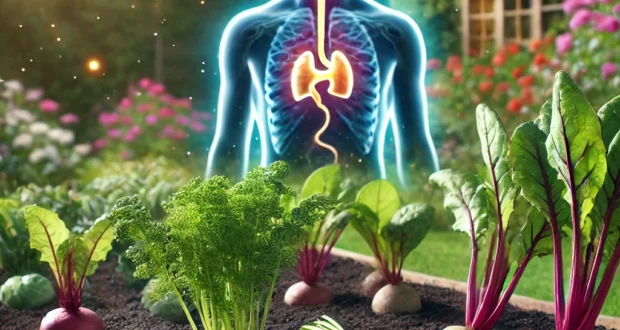Blog
This missing nutrient exhausts your garden and body
Here’s how to fix it naturally
In today’s fast world, we hear a lot about what is missing in our diet-vitamin d, magnesium, omega-3S-but one key nutrient is often omitted: iodine. While most people associate iodine with table salt, in fact iodine deficiency remains a global health problem, even in developed countries. And this is not just a diet problem – it starts in the soil.
If you grow your own vegetables for health, taste or food safety, introducing iodine into garden soil can be one of the most powerful steps you can take. Why? Because what is missing in the soil is lacking in your food – and what is missing in your food is missing in your body.
According to research published in geochemistry and environmental health, the concentration of iodine in soil directly affects the content of iodine in crops grown in this soil.
Silent crisis: iodine deficiency in soil and food
Iodine is necessary for thyroid function, hormone regulation, brain development and immune health. However, the American National Institutes of Health notes that iodine levels in an American diet have fallen by over 50% since the seventies. One of the main reasons: soil in many parts of North America is poor iodine.
This is particularly true in areas away from the ocean, where iodine -rich air and water do not reach. Over time, rain, erosion and modern agricultural practices dismantled iodine and other trace minerals from the soil. As a result, we grow fruit and vegetables – even organically – it may not contain iodine levels that our bodies must develop.
According to the 2012 study published in the field of geochemistry and environmental health, the concentration of iodine in soil directly affects the iodine content in crops cultivated in this soil. Scientists came to the conclusion that “iodine biofortification by iodine by soil is a feasible way to improve the consumption of human iodine.” In other words, you will get iodine into the soil that you can get it to your body – naturally.
Kelp: Ocean gift in your garden
So how do you introduce iodine into your garden? One of the most effective, balanced and natural ways is to use seaweed – a type of seaweed full of iodine hips and dozens of other trace minerals.
Kelp has been used for centuries as a soil conditioner and a plant amplifier. It helps plants to grow faster, rests on pests and recover after stress. But one of his most powerful benefits is invisible: it enriches the soil with iodine and necessary microelements, which most fertilizers simply do not provide.
That is why we included hydrogenism as a key ingredient ProtagrOur reserved “Super-Food” plant is available in www.growlelikecrazy.com. By feeding your plants, you will not only recharge their height-you also remove their iodine nutrition directly to your garden, and ultimately to the dinner plate.
Iodine rich vegetables begin with iodine rich soil
Some vegetables are naturally better to accumulate iodine when they are available in the soil. These include green deciduous ones, such as spinach, kale and chard, as well as root crops such as carrots, radishes and beets. When you provide iodine by fertilization based on seaweed, these vegetables can absorb and store it, creating truly functional food that supports thyroid and metabolic health.
The 2015 study at the Journal of Food Science and Technology has shown that the use of seaweed fertilizers significantly increased the content of iodine in vegetables, without affecting taste or performance. Application? Hydrogen -based corrections offer a real strategy for increasing diet iodine through daily food cultivation.
Really a lot of health payment and why it matters to you and your family
The World Health Organization estimates that almost two billion people suffer from iodine deficiency around the world, and the consequences can be serious: fatigue, weight gain, brain fog, infertility and even developmental delays in children. Ensuring adequate iodine consumption is not just a nutritional problem-it is a fundamental pillar of long-term health.
By enriching garden soil with iodine from natural sources, such as seaweed, you create a wave effect. You try healthier, more densely nourishing vegetables. You support your thyroid and immune system. And you reduce dependence on artificially fired products that are often equipped with additional chemicals.
A garden like your health depends on it – because it is so!
If you put your work to grow your own food, don’t miss this critical step. Most commercial fertilizers – even organic – are not formulated for iodine. That is why we created a protogrow: closing the loop of nutrients between the soil, plant and person.
By including hydrogenity into the fertilization procedure, you can transform your garden into a source of real food – not only for calories and taste, but for trace elements that your body wants.
So the next time you twist the soil, remember: you not only plant seeds – you plant health from scratch.

